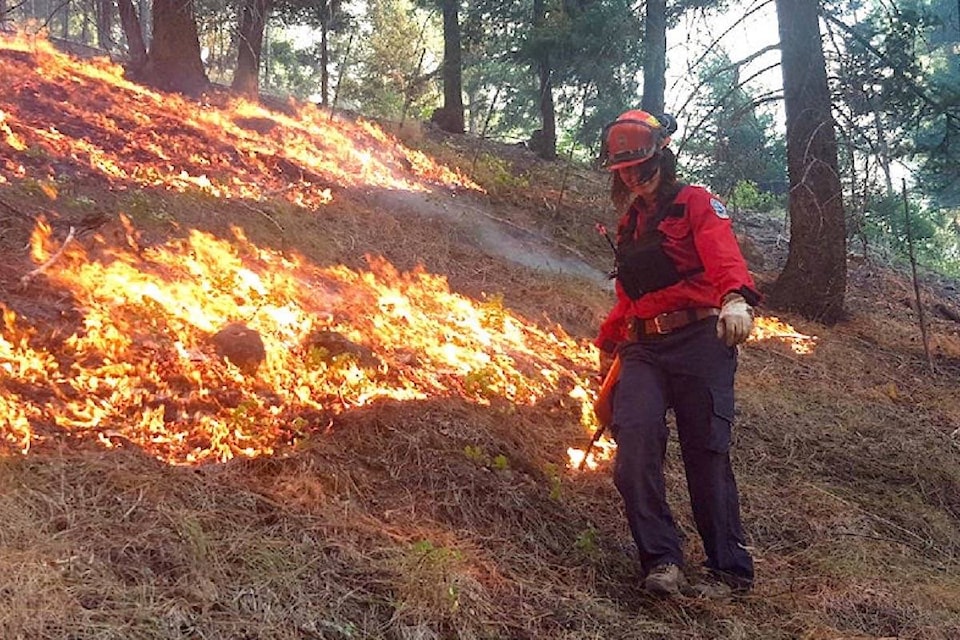“It makes a world of sense to always incorporate local knowledge in all aspects of emergency management,” says former Liberal MLA and cabinet minister George Abbott, who—along with Chief Maureen Chapman—spent five months travelling throughout the province, meeting with thousands of people and reviewing feedback as part of the BC Flood and Wildfire Review.
The independent review examined the 2017 flood and wildfire seasons, and a 148-page report entitled “Addressing the New Normal: 21st Century Disaster Management in British Columbia” lays out the background to last year’s disasters and the review’s findings, as well as 108 recommendations for government.
“Settlers have knowledge and equipment,” says Abbott. “The Filmon Report [produced after the 2003 wildfire season] proposed an inventory of available equipment, but we’re proposing something broader and more extensive. We need to use local knowledge and equipment, and use people as part of the team as much as possible.”
Reference is made to ranchers and farmers who felt they could help, but who were sometimes treated brusquely when they wanted to stay on their properties in the face of evacuation orders. “If people can’t contribute to fighting they should get out of the way of these incredibly powerful fires,” says Abbott. “But having allies on the land base can be remarkable when it comes to containing existing fires. If BC Wildfire Service (BCWS) crews can’t get there for a few days, small fires can become huge fires in that time.”
Abbott notes that the BCWS was overwhelmed by the mass lightning attacks of July 7, 2017, when a cluster of more than 100 lightning strikes hit areas of profound drought. “Was that storm a one-off? No. There’s been an annual increase in temperature since 1800; not enough to register over a person’s lifetime, but incidences of lightning will rise with those temperatures. It shows the wisdom of building alliances on the ground.”
The Filmon Report identified more than 800,000 hectares of land as being of medium to high concern and in need of brush clearing, but in the 14 years since its publication only 78,000 hectares have been cleared. “Addressing the New Normal” suggests that the cost of the necessary clearing would exceed $6 billion, and Abbott admits that the cost of implementing all 108 recommendations is prohibitive. “There are pressures on everyone’s budgets. We’re tapped out.”
Communication was also identified as a key area that needs work, due to the fast spread of information—and misinformation—via social media.
“The government needs to develop a single, integrated communications hub that is the recipient, and distributor, of real time/accurate information drawn from First Nations, local governments, Emergency Management BC. That way, when people are looking for updates on a fire, they can go to the hub for a good, real time sense of what’s going on with that fire.
“Social media is a powerful tool. We need to populate it with accurate, real time information.”
Responsibility is another area the report looks at. “There’s not full consensus between provincial and local governments around where the responsibility for floods begins and ends. We need to clarify those responsibilities.”
Abbott says that when evacuations are necessary there is a need to avoid confusion. “People need to know who’s in, who’s out, and who’s on alert. One thing we need to talk about is should we build a pan-provincial permitting system for people who stand and fight. Let’s not be punitive; let’s build a permitting system that will allow a rancher [who does not evacuate] to cross from the Thompson-Nicola Regional District to the Cariboo Regional District because he needs to tend cattle, but is told ‘No, you can’t cross that line.’ Fires and floods don’t respect boundaries. We need a much stronger partnership approach.”
Abbott is also an advocate for more education. “It’s a partnership initiative. We need to make people aware of the dangers. Everyone has a role, and all four levels of government—federal, provincial, local, and First Nations—need to buy-in.”
He says that he was very pleased with the turnout at local meetings and the number of online responses the review received. “I was pleased with the process, and pleasantly surprised by how much consensus there was on things like partnerships.”
There was one area, however, where his thinking changed very dramatically from what it had been at the start of the review process.
“We definitely need more education about prescribed burns. Those have fallen into disrepute over the last 10 to 20 years, and we need to learn from Indigenous people the techniques around prescribed burns.”
Abbott notes that while people object to the smoke from prescribed burns, the smoke from last year’s wildfires was much more intense and harmful than the smoke from prescribed burns, which burn cooler, and are carried out when the temperature is lower rather than in the height of summer.
The report “Addressing the New Normal”, containing all 108 recommendations made to government, can be read and downloaded at http://bit.ly/2KXpLO2.
editorial@accjournal.ca
Like us on Facebook and follow us on Twitter
